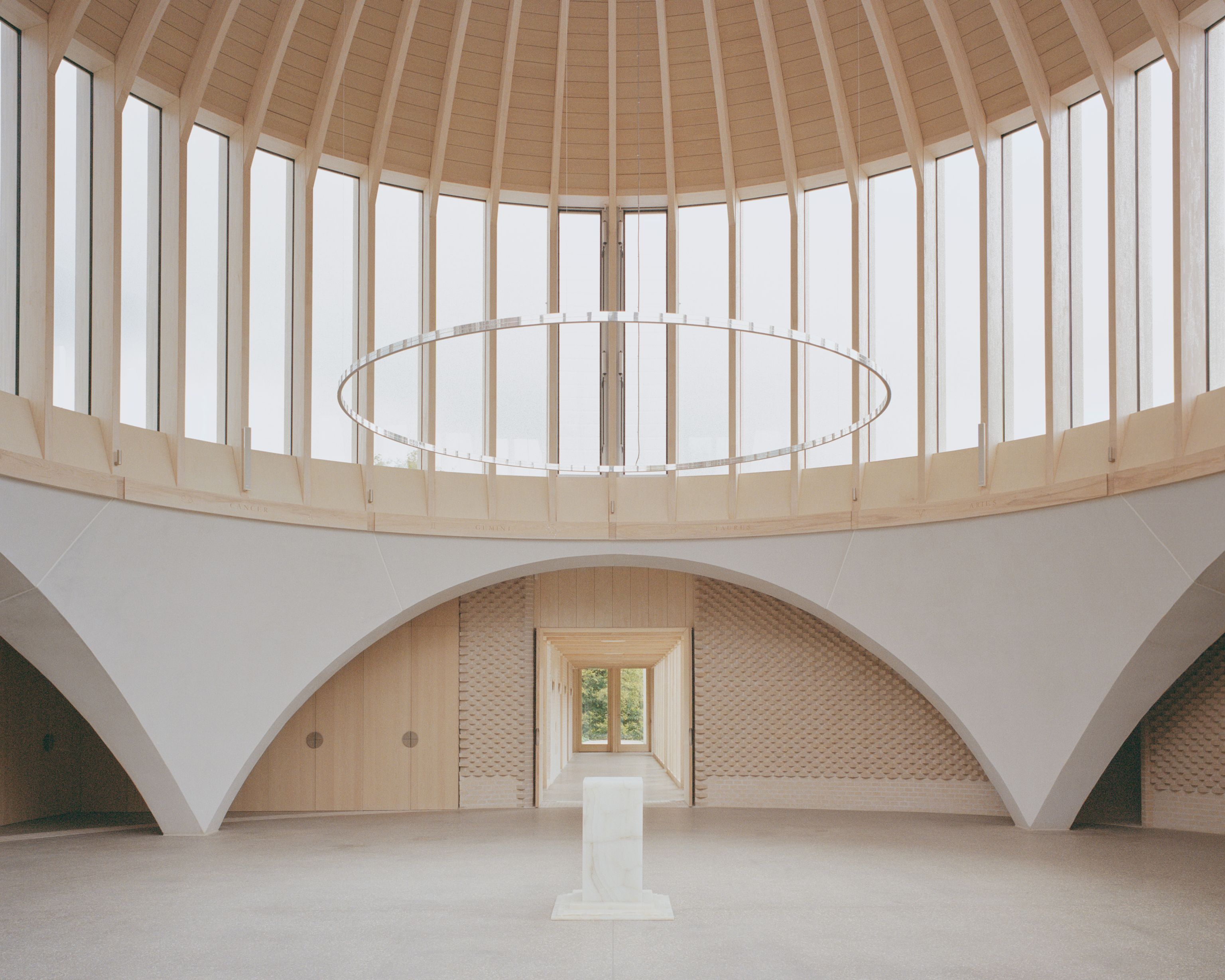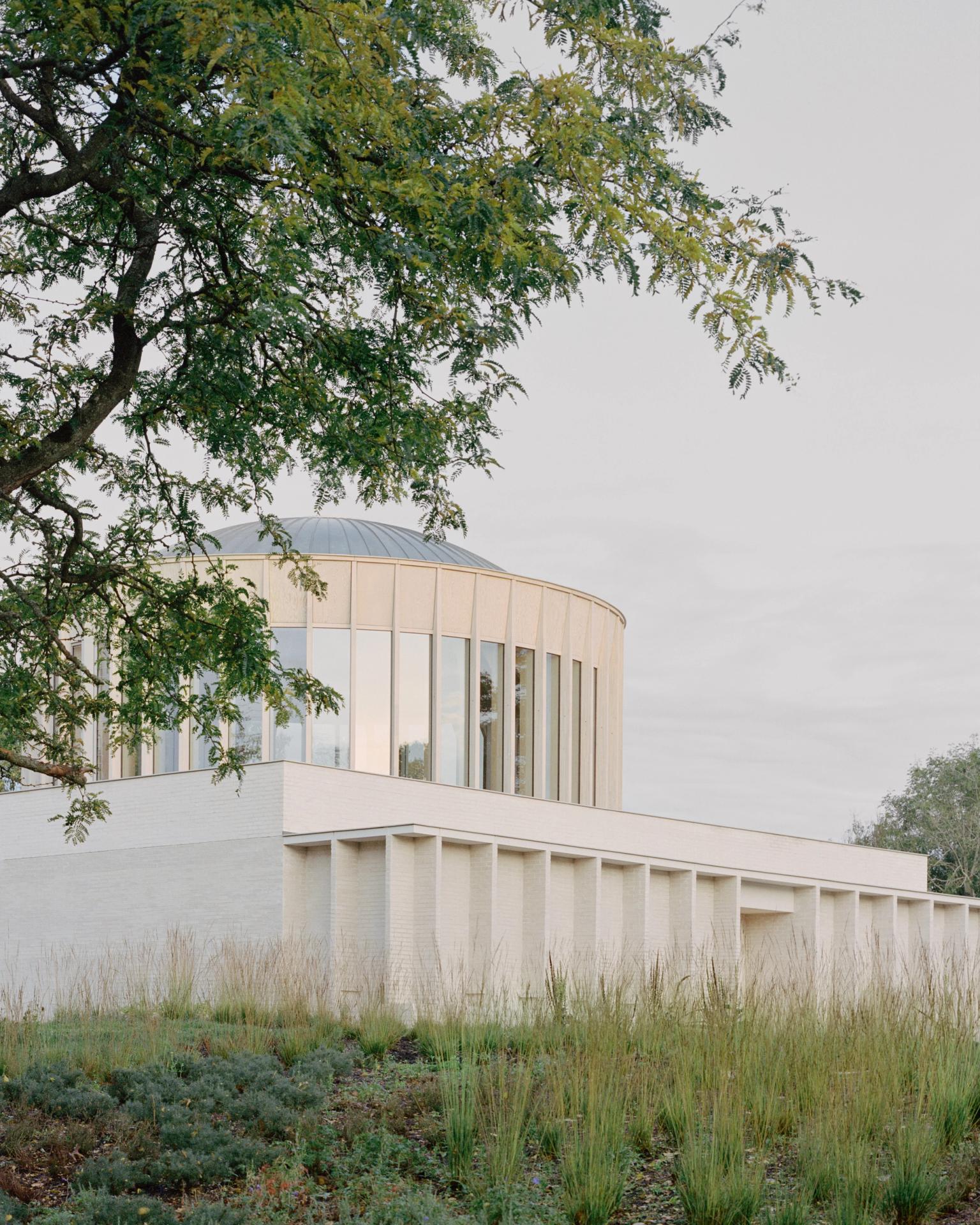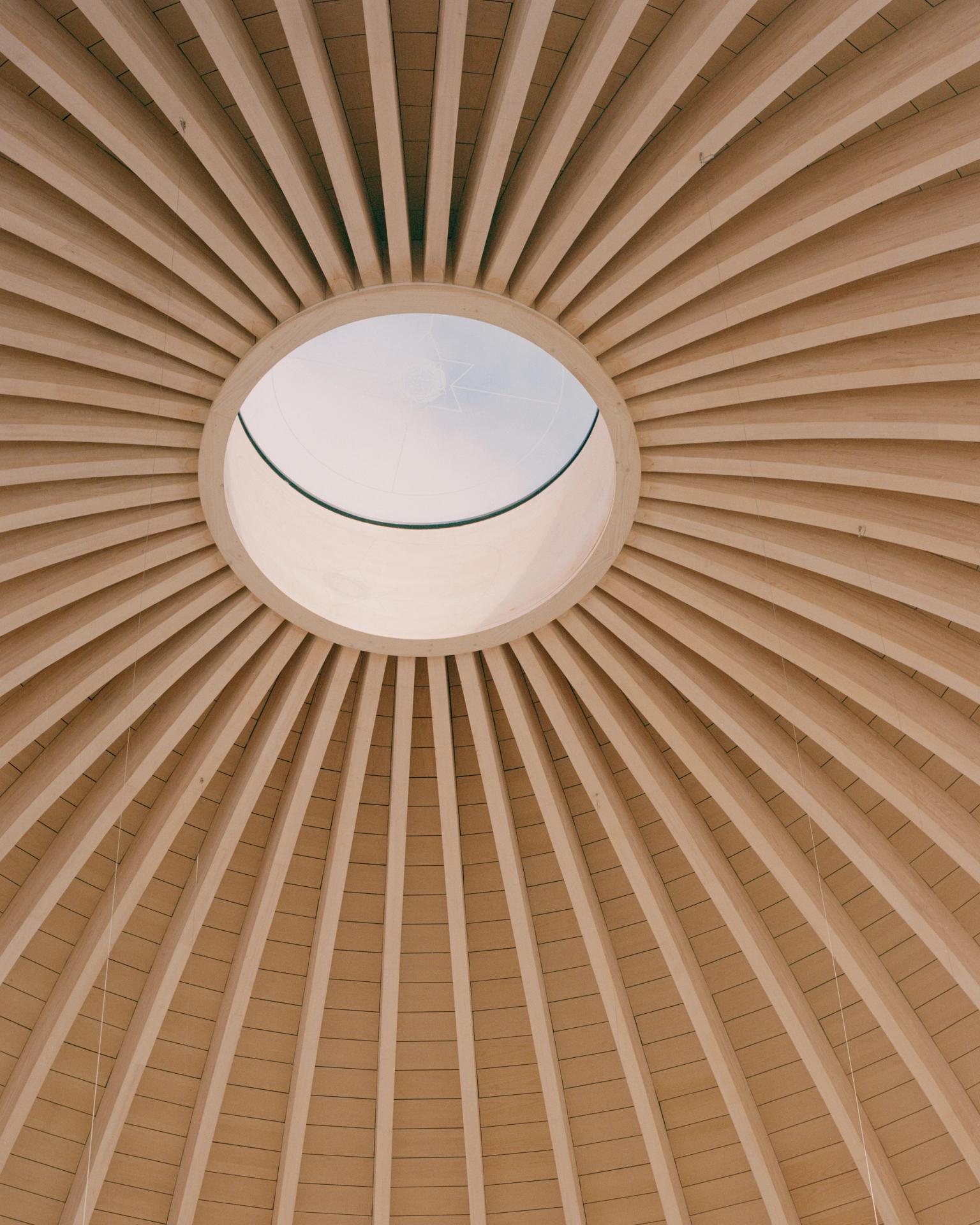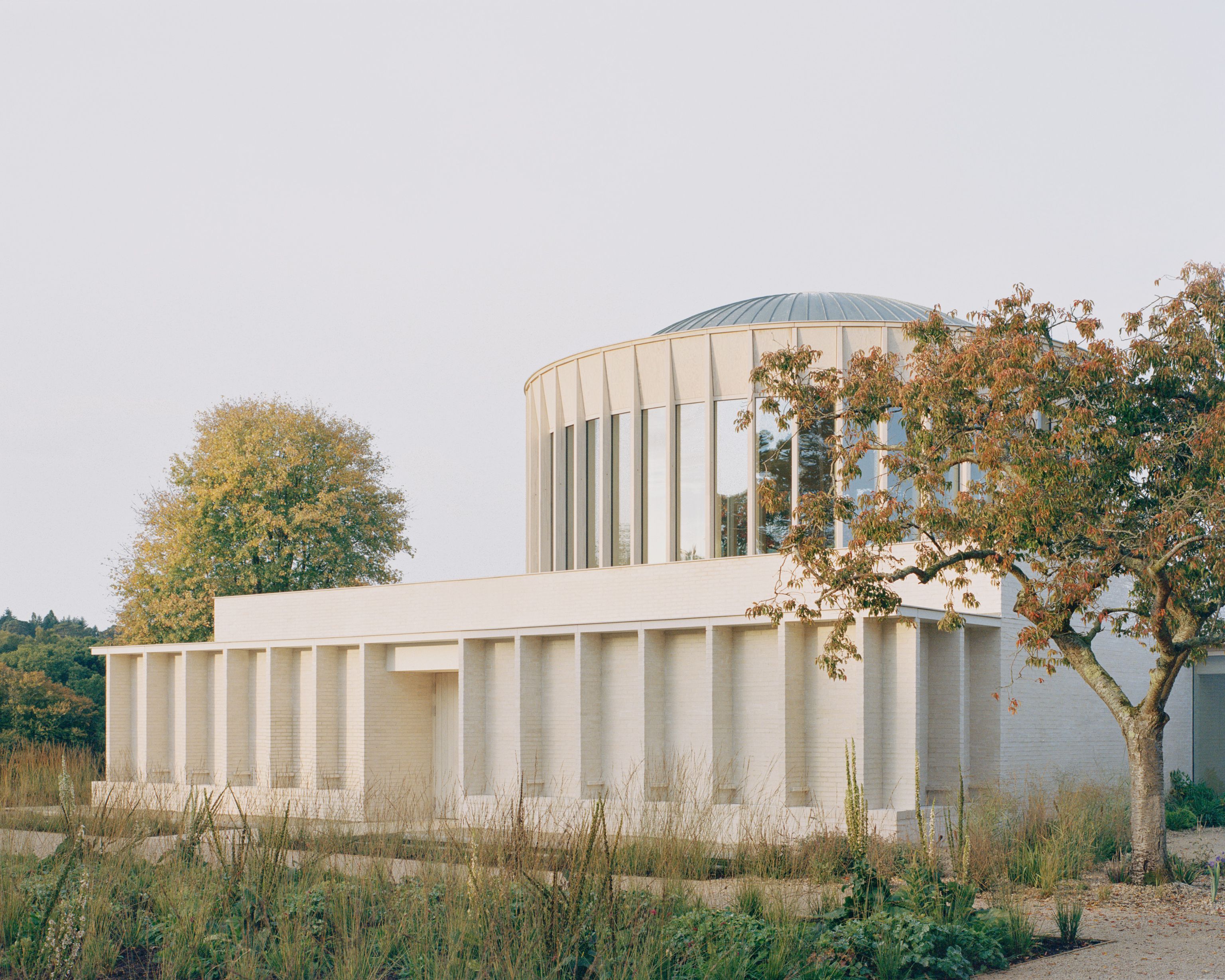
James Gorst Architects
Hampshire Temple
- ArchitectJames Gorst Architects
- PhotographerRory Gardiner
NORM ARCHITECTS We are deeply inspired by how this temple complex embodies a sense of rhythm, both in its cloistered walkways and in the interplay of light and shadow. The architecture is reduced to its essentials, where every gesture is purposeful and nothing feels superfluous...

Norm Architects perspective on the Hampshire Tempel
We are deeply inspired by how this temple complex embodies a sense of rhythm, both in its cloistered walkways and in the interplay of light and shadow. The architecture is reduced to its essentials, where every gesture is purposeful and nothing feels superfluous. The restrained palette of timber, brick, and lime mortar creates a timeless character rooted in honesty and craft. Precision and attention to detail can be felt in the meeting of materials, where simplicity reveals its profound richness. The use of natural, tactile surfaces fosters an atmosphere that feels both enduring and humane. The progression from secular to sacred spaces speaks to a choreography of movement that mirrors contemplation itself. Light is handled with great sensitivity, animating the interiors while maintaining a meditative calm. The integration of landscape, gardens, and reflection pools reinforces a seamless bond between architecture and nature. We admire how the design balances presence and humility, making space for silence and belonging. It is a powerful reminder that true minimalism is not about absence, but about creating harmony, resonance, and depth.
The Hampshire Tempel by James Gorst Architects
James Gorst Architects has completed a new temple complex in the village of Rake, Hampshire, within the South Downs National Park. The practice was selected following a two-stage design competition in early 2017 with a brief to replace the existing dilapidated 1970s complex.
The new building, which is open to the public, comprises a temple, library, chapels, meeting spaces, a public foyer and catering kitchen within newly landscaped grounds. The rationalised plan is organised as a series of orthogonal pavilions connected by a cloistered walkway, facing onto a central courtyard garden. The internal arrangement follows a progression from secular to ritual spaces, moving from a timber portico and social foyer at the visitor entrance in the east, through to the main temple space in the west.
With a brief to create a building characterised by peace and simplicity, the James Gorst Architects team developed a restrained palette of timber, brick and chalk lime mortar typical of the Hampshire context. The resulting spaces allow for quiet contemplation and encourage a spiritual connection to the surrounding landscape.

The building demonstrates an exemplar approach to passive design and long-term sustainability. James Gorst Architects adopted a ‘fabric-first’ approach to the build, with the main structural frame entirely constructed off-site from glue laminated timber, engineered to eliminate the need for any steelwork. Underfloor heating is provided by aground source heat pump that is buried in the landscape, with additional power provided by photovoltaic panels.
The inner temple’s pre-cast pendentive arches provide thermal mass. A raised floor slab naturally cools the internal spaces with fresh air supplied by an underground labyrinth ventilation system, while high level actuators in the temple clerestory allow warm air to escape.“Our aim was to create balance between the landscape, building and interiors, to form one coherent and harmonious design, exploring the relationship of the architecture to the spiritual context,” said Steve Wilkinson, Associate at James Gorst Architects.

Collaborating with landscape architects McWilliam Studio, Wilkinson and the team undertook a wider reorganisation of the site, providing a series of gardens connected along pedestrian pathways, to allow for moments of contemplation and connection to the surrounding valleys. At the entrance to the building, two reflection pools animate the east façade and offer a moment of pause and meditation, while the central courtyard is sized to mirror the internal footprint of the temple.
David Roy, Director, James Gorst Architects, said: “Our design for this temple complex is the result of a very detailed journey of collaboration with our client. The process of listening and responding to their unique requirements over an extended period of time allowed us to create a building that is closely tailored to their needs, and which expresses our ethos of sensitivity, proportion, and purpose.”










